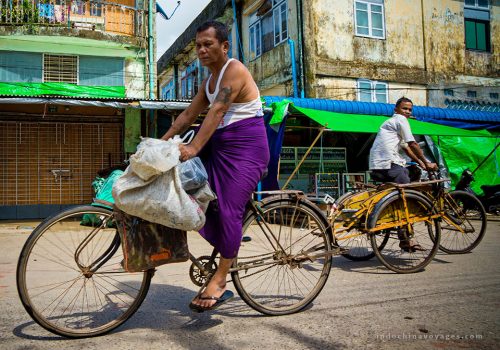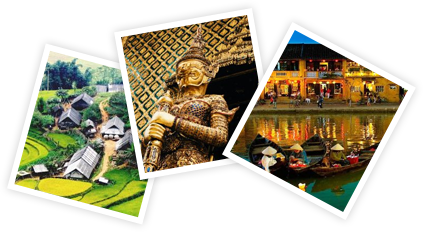In most Asian countries, people rarely wear their traditional outfit every day. Be it Kimono, or Ao dai, etc., they only remain as a symbol of tradition and only used on special occasions. However, it is different in Myanmar. Longyi – as how Myanmar traditional costume is called, is still surprisingly ubiquitous. Longyi Myanmar must have had such a strong bond with Myanmar culture that it is not replaced by western clothing.
In this article, we will deepen into insights of Myanmar traditional clothes and how it remains popular in this modern society.
A history of Longyi Myanmar
It was not until the British colonial area that Longyi was introduced to Myanmar. Its predecessor is called Paso (for men) and Htamein (for women).
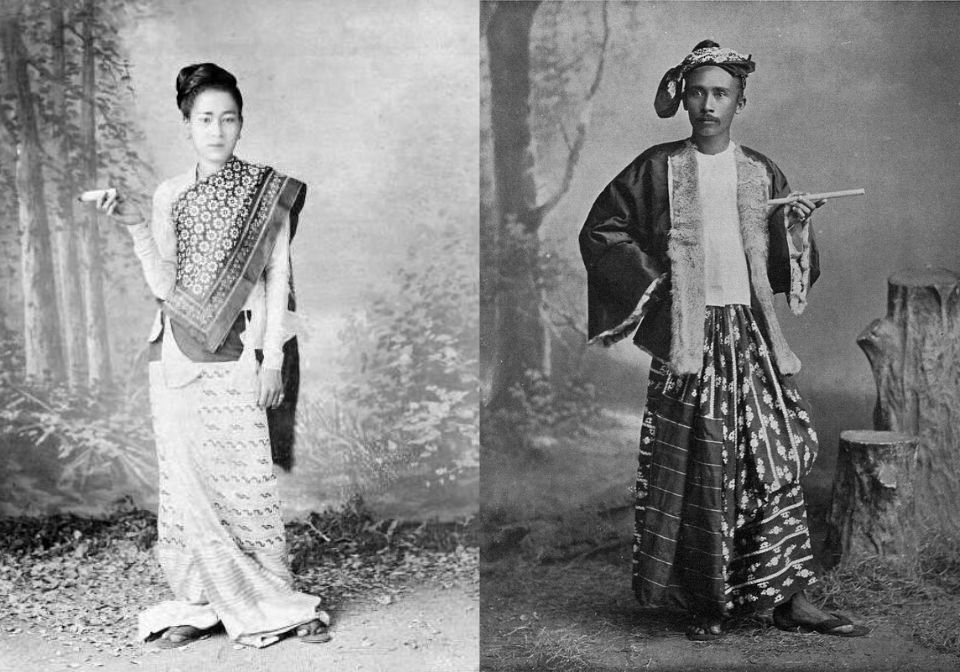
Men’s Paso was a long piece of 30 feet (9.1m), and women’s Htamein was 4.5 feet (1.4m). During this pre-colonial times, the type and amount of clothes greatly represented social status. The more fabric one had, the more affluent they were like to be.
However, ever since its introduction, Longyi had been quickly adopted due to its convenience. Until now, it has become an unmistakable part of Burma culture.
Since people did not wish to wear excessively abundant clothes anymore; and silk, once an expensive material, became cheaper, Longyi is no longer a social indicator. Presently, people, rich and poor alike, can afford decent Longyi(s).
Longyi variations and its reflection over native culture
Each ethnic tribe in Myanmar seems to have its own Longyi style. Therefore, knowing the difference, you can easily tell where people come from based on the traditional clothes they wear. It’s such a great way to understand more about Burma’s rich traditional culture.
Materials
Cotton is the basic material for this Burmese clothing. But elegant materials like silk are popular for special occasions.
Weaves and patterns
There are numerous styles which are associated with particular ethnicities.
- Kachin is known for its diamond-shaped patterns, whereas zig-zag pattern is Bama’s signature.
- Inle tribe love to have artistically floral patterns which are also popular among ladies.
- In the town of Yaw, Ayeyarwady River, central Myanmar, people pride themselves on their Longyi patterns. They include checked patterns with dots and squares. The latter is famous for men.
- The most sophisticated Longyi pattern is acheik of Amarapura region. People there weave longyi with attractive and elaborate wave pattern in different color combinations. These fabrics are often used at weddings when the bride and groom would wear them in matching colors.
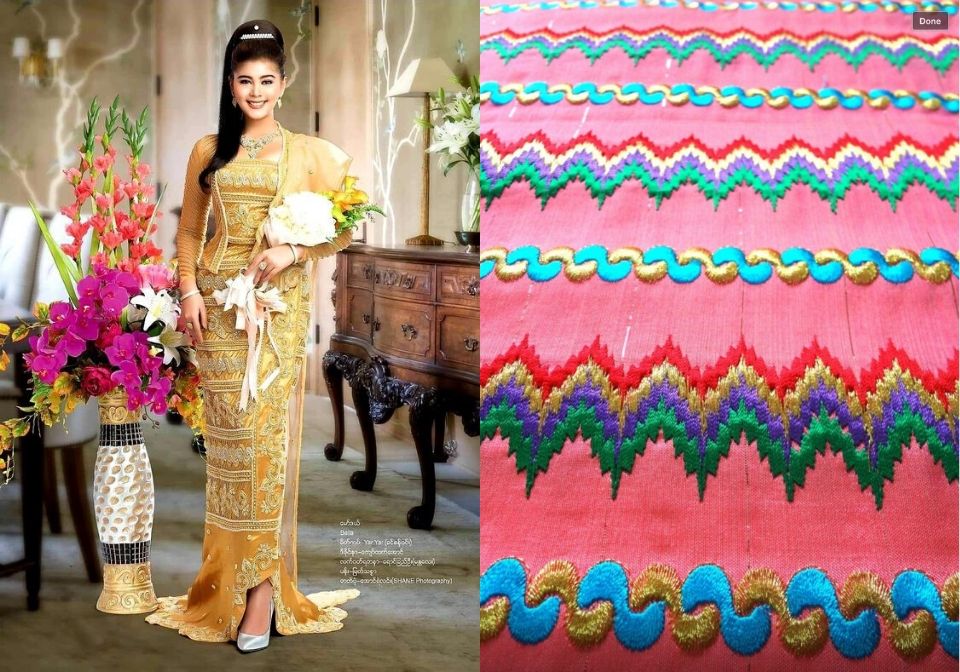
These unique designs are passed down from generation to generation of minor ethnic communities. More importantly, they are handwoven. Thus, it can be said that the designs are not just a moment of artistic creation, it’s connected to Myanmar’s past.
Longyi Myanmar’s widespread popularity
It does not stay in the country, but it gains popularity among Asia regions. Locals in India, Bangladesh, Sri Lanka, Thailand, Malaysia, and Indonesia also wear Longyi. In these places, the cylindrical dress is called by different names such as lungi, longi, kaili or sarong. Nevertheless, there are not many places that it’s as widely used as Myanmar.
Longyi makes its way into Myanmar people
How men and women wear Longyi in Myanmar
It is not a unisex costume. Each gender has its own signature fabric pattern. Also, how to wear Longyi differs between men and women.
Men
Burmese men wear Longyi with plain, checked or striped patterns. The dress can be worn upside down and inside out alike. Normally, people will tie a knot to hold Longyi in place. The knot is often more or less the size of a tennis ball. However, sometimes Longyi is worn without a knot too. In other times, Myanmar male fold their Longyi up to wear it like a short.
You can easily find how to wear Myanmar traditional dress in this video:
Women
Women’s Longyi (Htamein) often has more vivid and diverse patterns. The floral pattern is also popular too. Unlike Paso (male’s longyi), dress for women has a black band around the waist. Thus, it can only be worn one way. To fixate Longyi, Burmese women often pull all of the fabric to one side of their waist. Then they fold it at the hip and tuck it into the other side.
When to use Longyi
You will be surprised to see how versatile Longyi Myanmar can be. No wonder why Myanmar people can wear this dress every day with little convenience.
For men, this Burma traditional dress can be used for agile activities, even sports games. In this case, you can pull the front part of the dress backward between the dress, then tuck it up in your back waist. This is how Burmese men used to wear when they did farming or other labor activities. In ancient times, soldiers also wore this way.
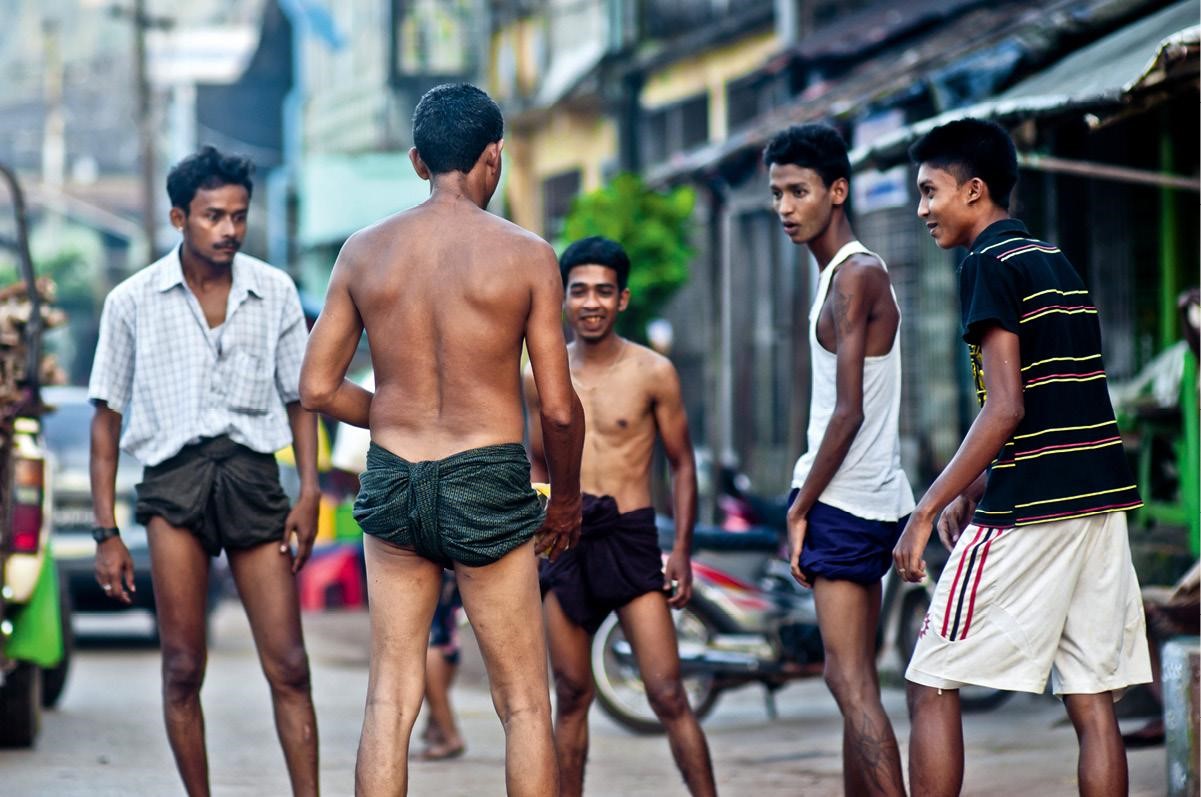
As they are cylindrical, it can be washed and ironed easily. Moreover, it is pressable, foldable, and easy to hang. Therefore, Longyi does not take a lot of space in your wardrobe.
Changing Longyi is also easy and convenient. One can effortlessly put on a new Longyi without having to remove the old one in advance. Thus, you need no closed space to change. This is how Burmese women usually change their clothes.
Moreover, Longyi makes it simple to wade in the water. Without much worries of getting wet, people can walk in water just by pulling their Longyi a little bit.
In rural regions, men and women wear Longyis when bathing in public for the sake of modesty. On this occasion, you can wear it in the way that you wear your bath towel: wrap it around your torso and tuck it under your armpit.
How Longyi means to Myanmar people
To many elderly Myanmar people, Longyi makes them feel “comfortable, simple, gentle and attractive”. This is the reason why people love to wear every day.
It is the uniform for all students from elementary schools to universities. While some kids prefer to wear modern western clothing, a lot of them still happily wear Longyi to school every day. They have stated that “It is because Longyi is part of Myanmar’s unique culture”.
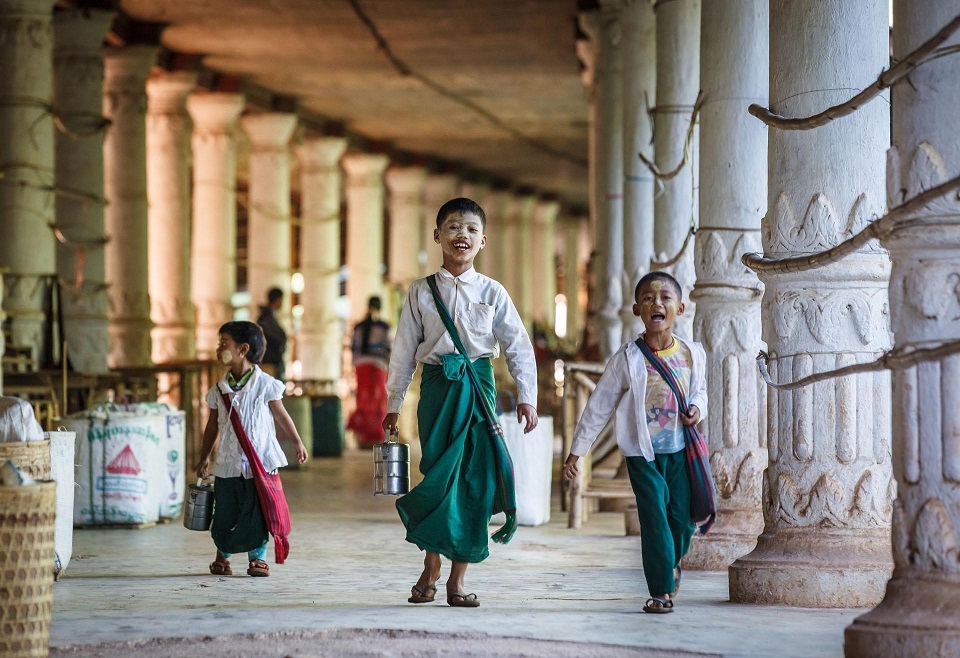
Let us see pictures of Myanmar people in their meaningful costumes
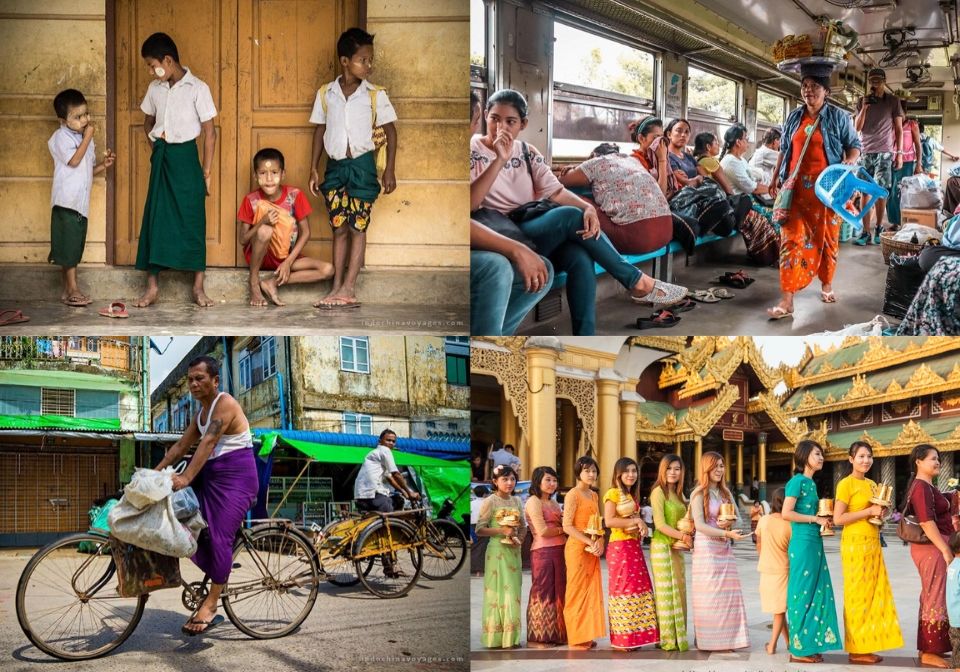
Where to buy Longyi Myanmar
Should a foreigner wear Myanmar traditional dress?
If you are worrying about whether to wear Myanmar traditional dress on your Myanmar itinerary, you can chill now. To Burmese people, they like it when they see foreign visitors wearing their traditional costumes. It’s an act of respect for the indigenous culture. Therefore, Longyi can be our ice-breaker to Burmese people’s hearts. It would help travelers blend in and understand Myanmar’s local culture more.
In the same way, if you are given a strange look by Myanmar people while wearing Longyi, do not be nervous. They just find it unusual and impressive.
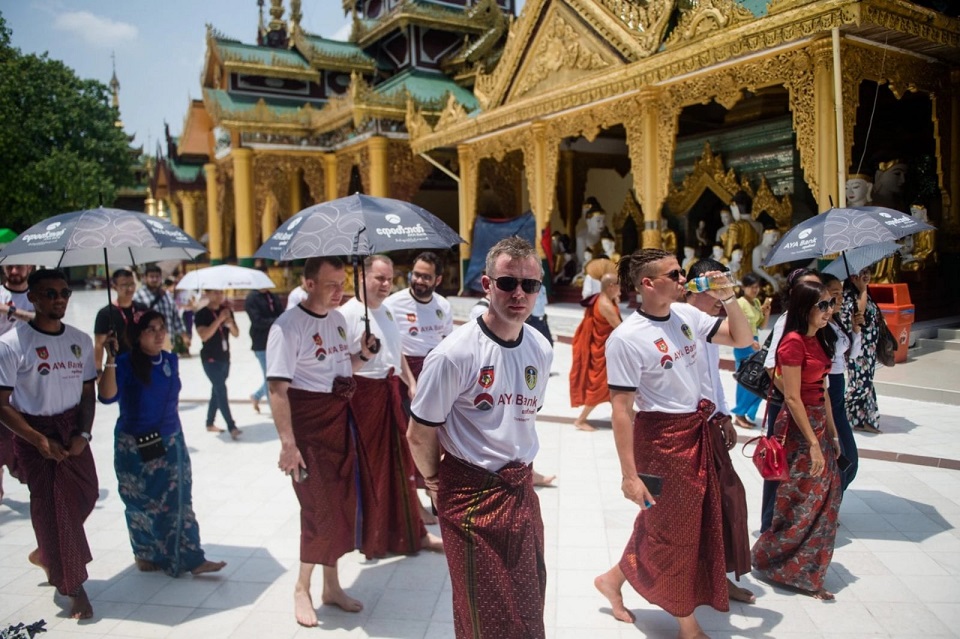
Where to buy Longyi
You can easily buy Longyi at any shop in Yangon. Some recommended place is Scott market, so-called Bogyoke Aung San Market. They have decent tailors who can help you choose Myanmar clothes fitting your appearance.
It can vary in price, depending on patterns, waves, and materials. However, a common dress normally costs US$15-30.
One more tip for you is since Longyi can fall off if it’s tucked by your feet or any sharp objects, safety pins can save your life.
Longyi meets the modern world
Although indeed, Longyi can still be seen everywhere in Myanmar, in recent years, young people have been using it less. Modern fashion with various shapes and sizes give them more choice than a cylindrical dress. It’s the same problem of tradition and modernity. Whether Myanmar traditional dress can keep its position or will it be replaced by modern clothes like in other Asian countries? Only time can answer.
Some suggestions for Myanmar tours
Chi Tran – Travel Specialist







